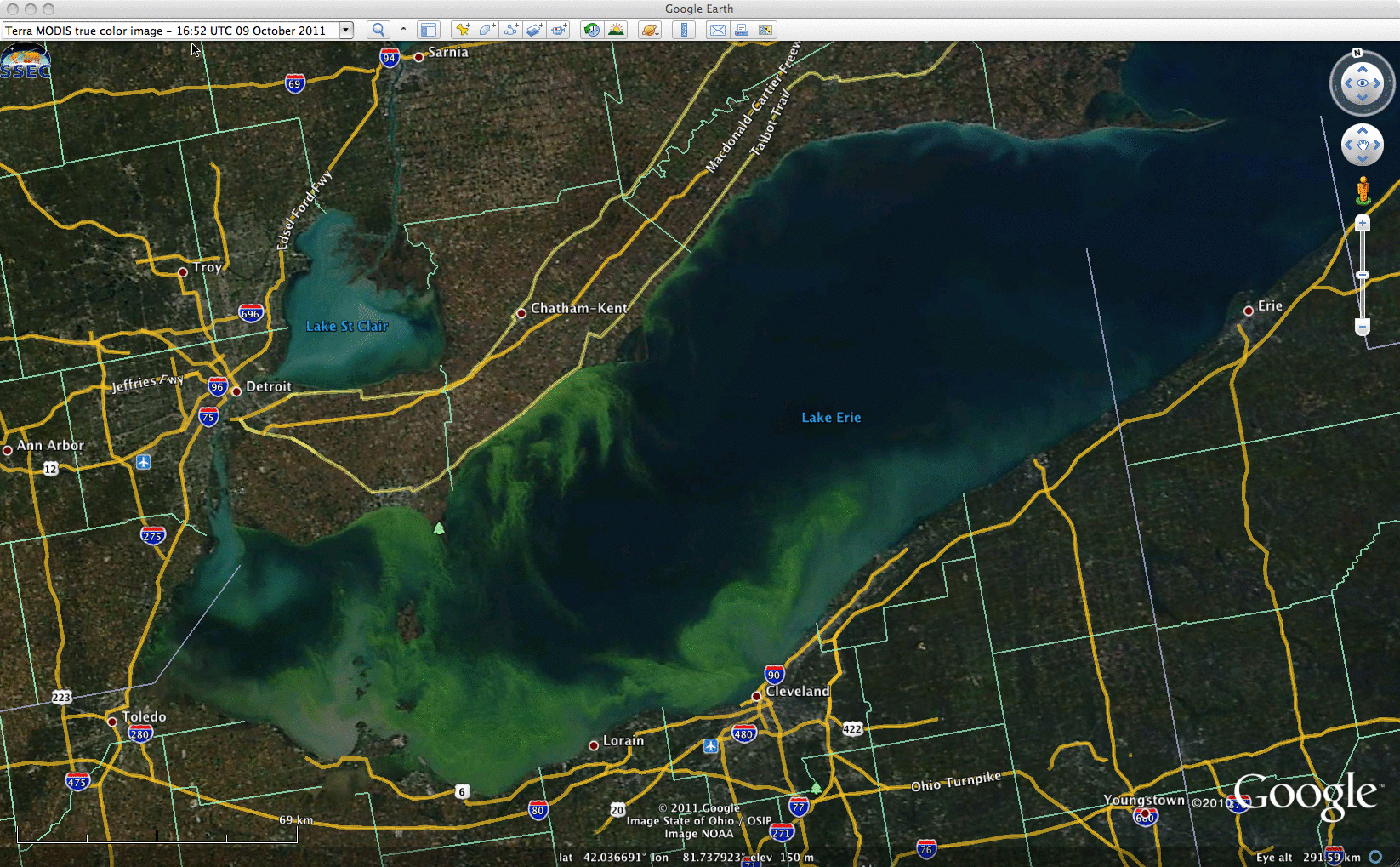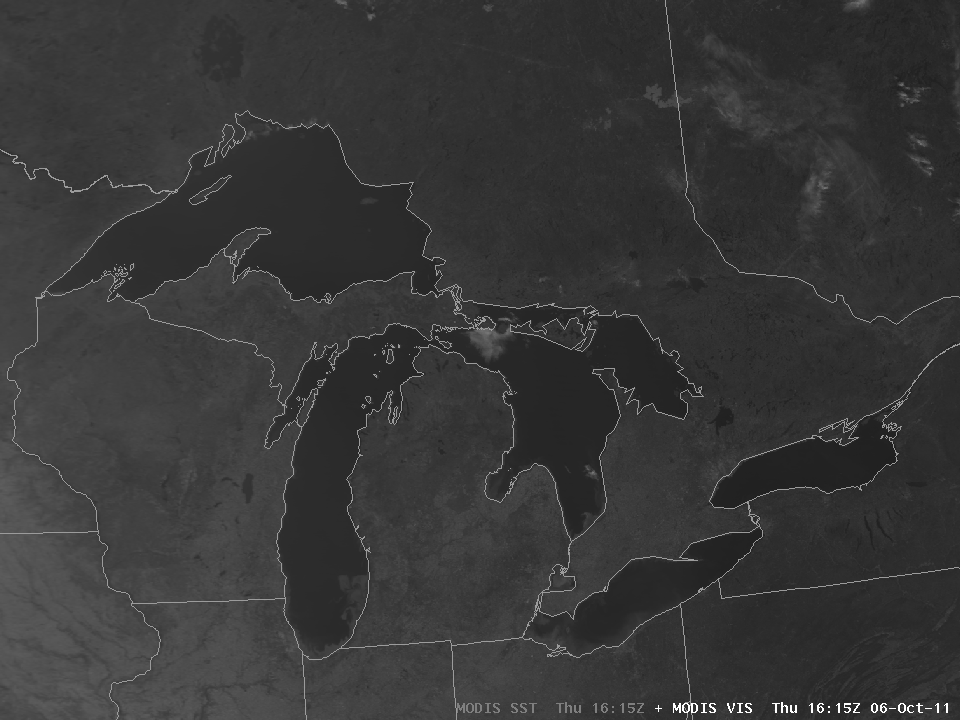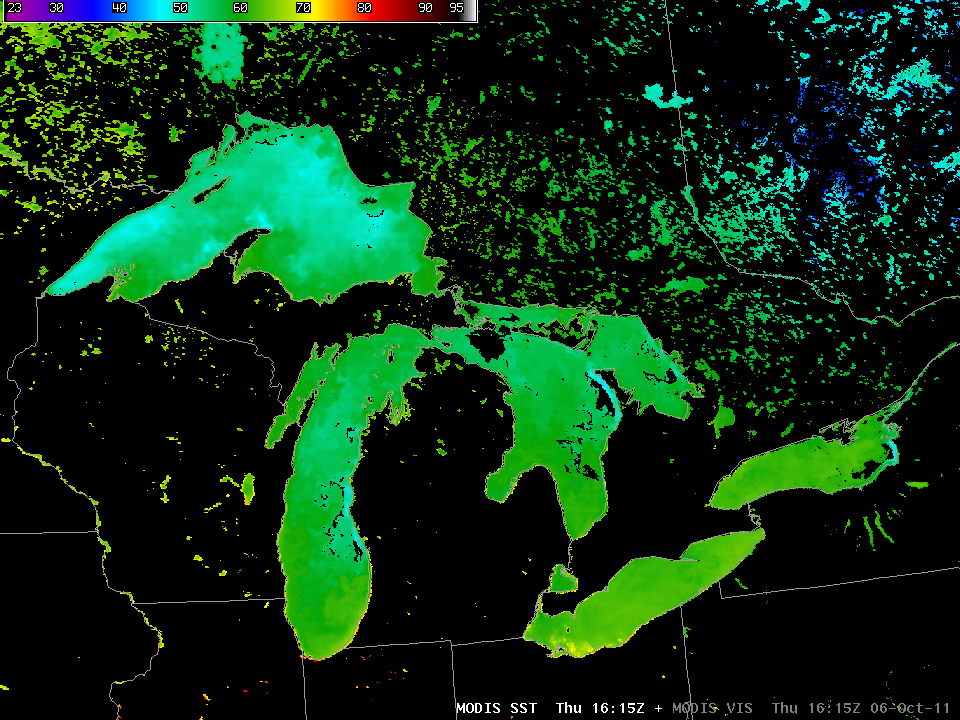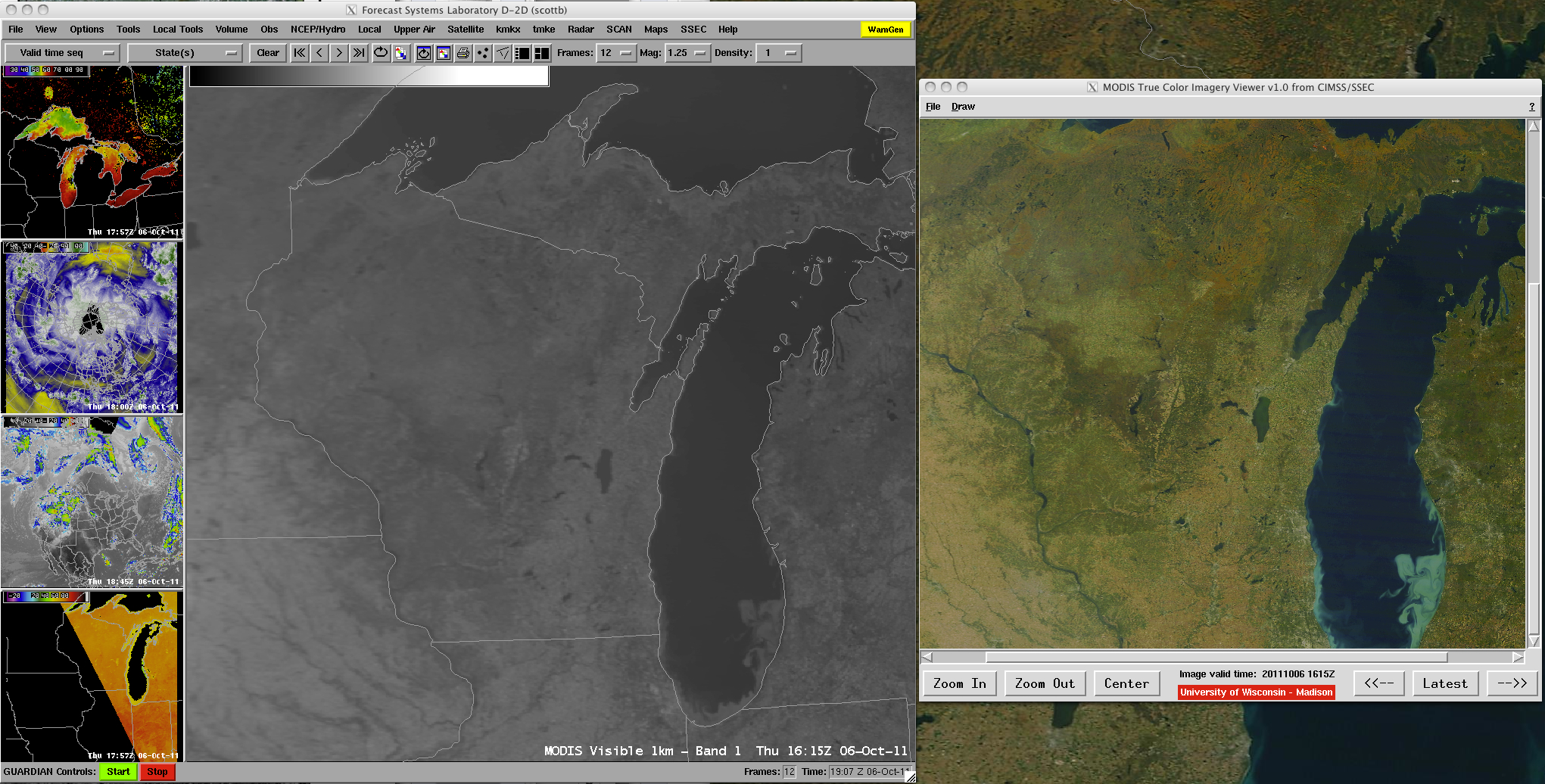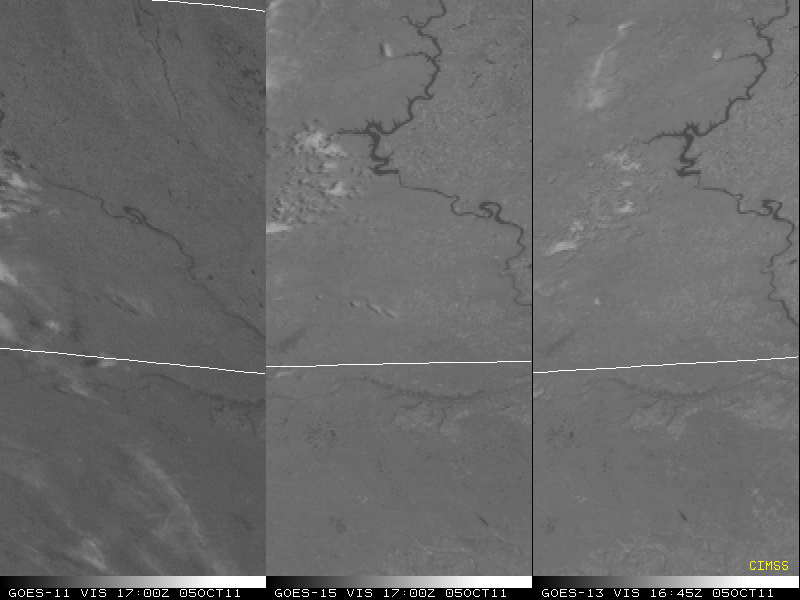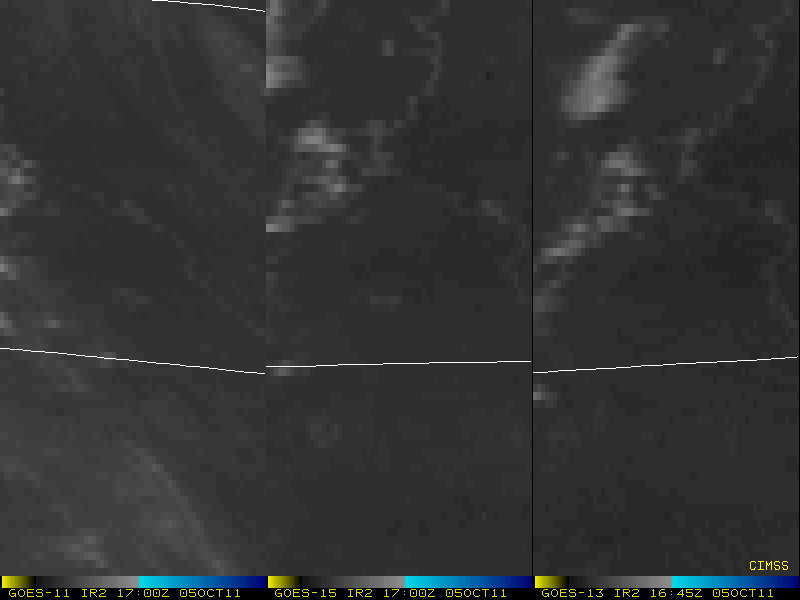A previous blog post discussed the sediment features seen in southern Lake Michigan in early October of 2011. However, looking a bit farther to the east over Lake Erie several days later, a 09 October 2011 comparison of 250-meter resolution MODIS true color and false color Red/Green/Blue (RGB) images from the SSEC MODIS Today site (above) showed a notable contrast between the two lakes: large green colored features covered much of western Lake Erie, compared to the cyan colored sediment that was seen in southern Lake Michigan (as well as southern Lake Huron).
According to the NASA Earth Observatory site, this is one of the worst algae blooms in Lake Erie in decades, brought about in part due to large amounts of runoff into the lake following a period of above-normal precipitation. The thickest portions of the algae bloom appear brighter green in the false color images, similar to the way that dense vegetation does.
A comparison of the consecutive Terra (16:52 UTC) and Aqua (18:33 UTC) MODIS true color images (below, viewed using Google Earth) seemed to suggest a slight northward movement of the algae features during the 91 minutes between the two images.
An animation of GOES-15 0.63 µm visible channel images (below) confirmed the gradual northward movement to the algae bloom features over western Lake Erie during the day. Surface winds were generally light out of the south across the region, so most of this motion was likely driven by lake currents.
View only this post Read Less



